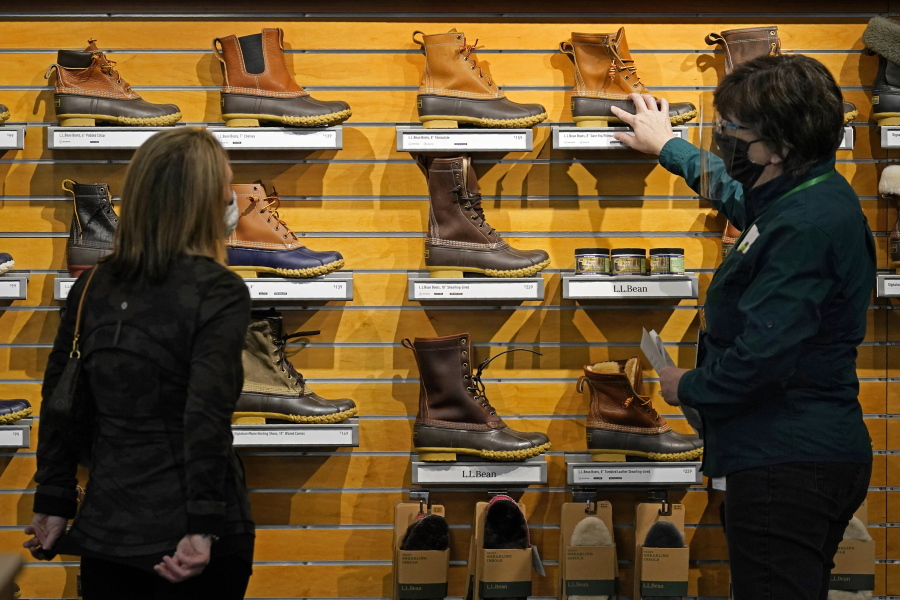WASHINGTON — A much-awaited economic boom coming off the pandemic recession appeared to edge closer to reality Thursday with fresh data showing the pace of layoffs dwindling, consumers spending freely and manufacturing rebounding.
The latest barometers point to a U.S. economy that’s steadily regaining its health as vaccinations accelerate, business curbs are lifted in many states and more people are willing to travel, shop, eat out and otherwise resume their spending habits. Though many Americans who have lost jobs or income are still suffering, hopes are rising that the benefits of the recovery will spread further in the coming months to groups of people who have yet to benefit.
The number of Americans applying for unemployment benefits tumbled last week to 576,000, the Labor Department said Thursday, a post-COVID low and a sign that layoffs are easing.
And sales at retail stores and restaurants jumped 9.8 percent in March, the biggest gain since May 2020, when the economy first started to rebound from the virus’s initial blow. With U.S. household savings high, economists are optimistic that the faster spending is sustainable.
“We are really kicking into that next gear now,” said Adam Kamins, senior regional economist at Moody’s Analytics. “Things are moving more decisively in the right direction than at any time in the past year.”
The pace of weekly applications for unemployment aid is now down significantly from a peak of 900,000 in early January and has dropped below the 700,000-plus level where it had been stuck for months.
A total of 16.9 million people are continuing to collect unemployment benefits, down from 18.2 million in the previous week. That decline suggests that some of the unemployed are being called back to jobs. But the large number of ongoing recipients also points to the harsh impact of the pandemic on tens of millions of households.
Trillions of dollars of government stimulus, including $1,400 checks that have gone to most adults, as well as higher savings that many households have managed to build, have fueled more spending. Auto sales soared 15 percent in March, according to the government’s retail sales report. Purchases at electronics and appliance stores jumped more than 10 percent. Sales at clothing stores soared 18 percent.
Warm weather in March, after ice storms in some states had held back consumers in February, likely drove more retail spending. Restaurants and bars reported a 13 percent increase in sales, the most since June. Most states have allowed more indoor dining, and outdoor dining likely picked up.
Among the consumers who are stepping up their spending is Teresa Golden of Renton, who said she used her first two federal stimulus checks to catch up on rent and bill payments. With the most recent check, she said she spent $500 on Levi’s jeans, Old Navy clothing and shoes from Finish Line. An additional $500 went to restocking her pantry with items that will last a while — ketchup, sugar, spices and Clorox wipes, among other things.
“I finally caught up on my bills and could go on a bit of a spending spree,” said Golden, 49, who works at a school system.
At the same time, factories are humming again. In March, the Federal Reserve said Thursday, manufacturing output increased 2.7 percent. Many economists expected a larger gain after output had fallen in the midst of February’s unseasonably cold weather. But shortages of raw materials and parts, from lumber to semiconductor chips, probably slowed factory production.
Thursday’s encouraging news follows a report earlier this month that employers added a healthy 916,000 jobs, the most since August, during March. The unemployment rate fell to 6 percent, less than half the pandemic peak of 14.8 percent in April of last year.
Kamins, the Moody’s economist, noted that data from Google’s mobility tracking service shows that Americans are increasingly venturing out to shop, visit restaurants and go to movie theaters and other entertainment venues.



